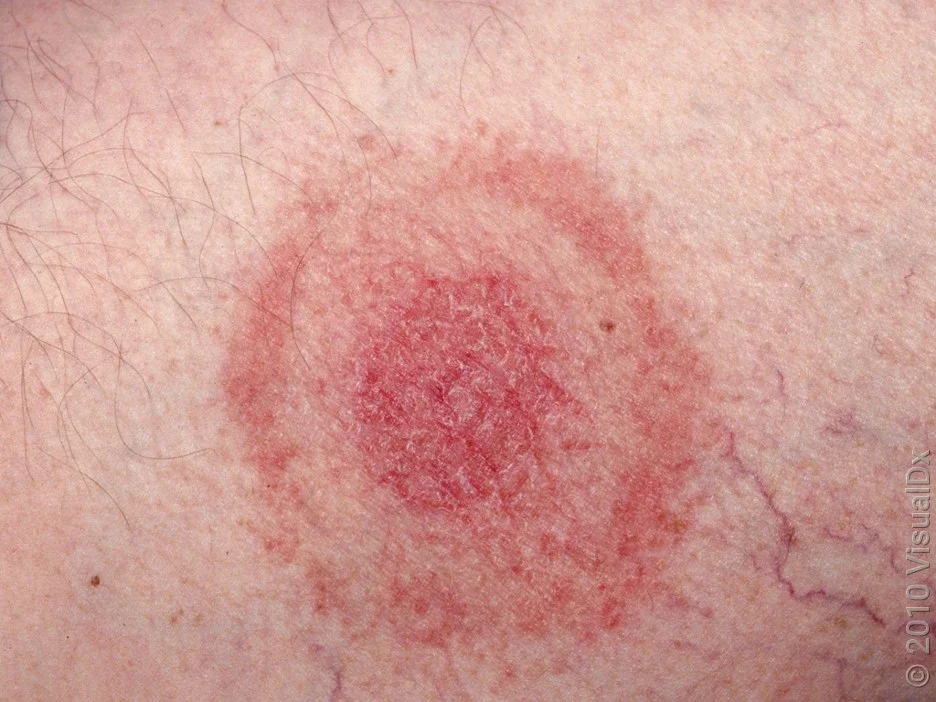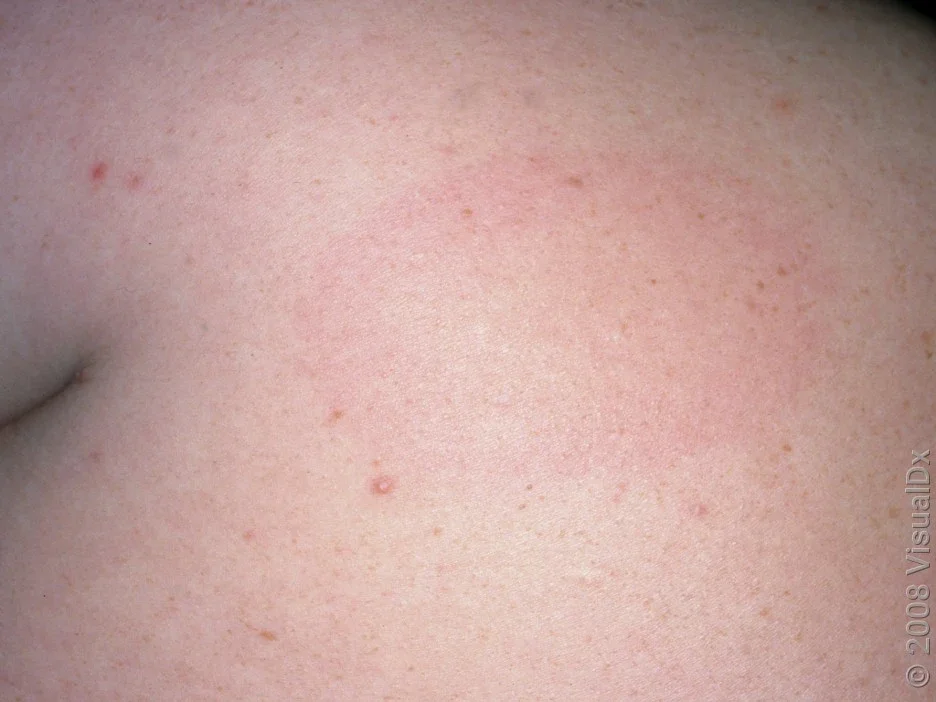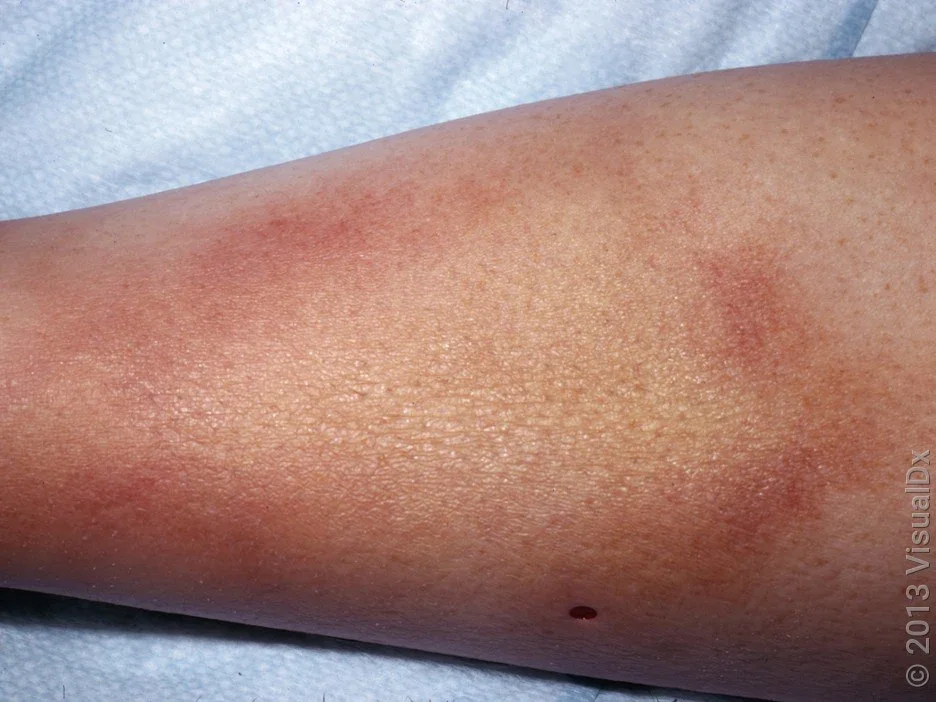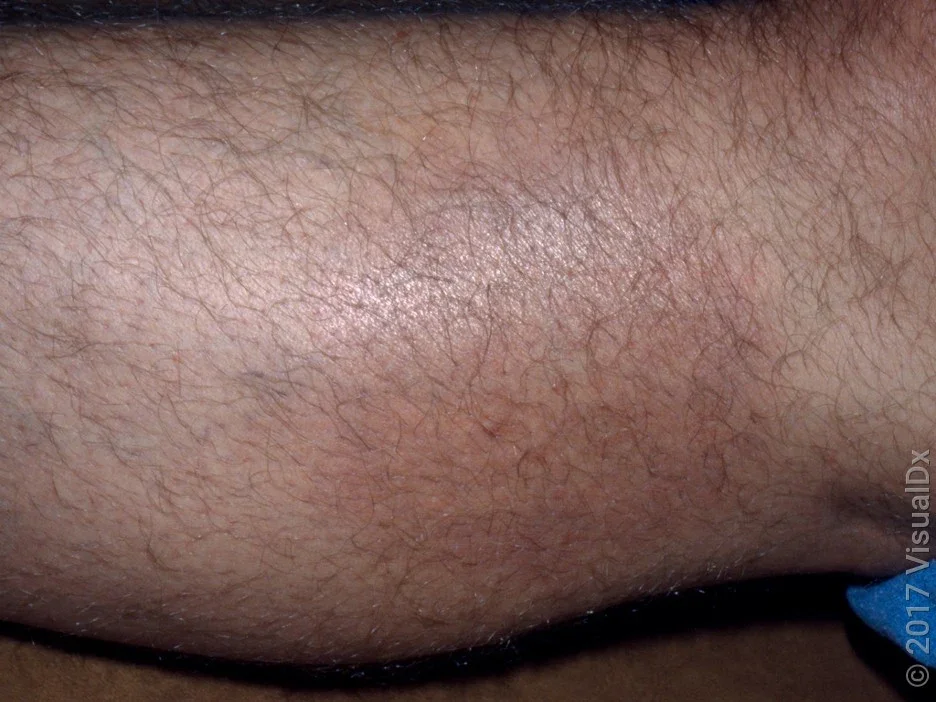Tick bites are common, but fewer than 5% of bites actually cause disease. About half a million tick bites cause new illnesses each year.
Symptoms from a tick bite might not show up for days to weeks after the bite. Knowing the symptoms of tick-borne illnesses — like rash or joint pain — can help you catch it early and get treatment.
People who visit tick-prone areas (like woods, grassy areas, or gardens) should do regular “tick checks” to look for a tick bite and rashes from tick-borne illnesses.
Tick bites are common nuisances, especially for people who hike, garden, or spend time outdoors. Fortunately, most tick bites aren’t serious. But about 500,000 tick bites result in illness every year in the U.S. — and the number of new illnesses is rising. About 80% of those illnesses are due to Lyme disease.
The best way to know if you’ve been bitten by a tick is to do a “tick check” after being in a tick-prone area. To do a tick check, carefully scan your entire body for ticks. This is important because quick removal of a tick can prevent disease. In fact, your risk of Lyme disease is much lower if the tick is removed in fewer than 36 hours.
Even if you don’t see the actual tick on your body, you should know what a tick bite looks like and be on the lookout for symptoms. Early treatment of tick bites can prevent illness or reduce the risk of serious complications.
Search and compare options
Tick bite marks on humans can vary in appearance and can change over time. The first signs of a tick bite are skin changes related to the actual bite. These include things like:
A small pinprick or a black dot
A small nodule (lump) that’s skin-colored, brown, or reddish
A blistered area
A small bruise
Changes in skin color (red, brown, or dark purple)
Swelling or a sore on the skin
Bull’s-eye rash
Small pink, violet, or brown skin patches, especially on the hands, arms, and feet
A tick head stuck in the skin
An allergy to meat and dairy (called alpha-gal syndrome)
Most tick bites are harmless, and these skin changes usually go away on their own in about a week. But some tick bites can cause serious illness, including the most common one, Lyme disease.
Not all tick bites lead to Lyme disease. One of the first signs of Lyme disease is the bull’s-eye rash, which happens in about 3 in 4 people. This round rash develops within 30 days of the tick bite.
It starts as a round spot and then slowly grows into a larger circle. Sometimes, it forms a ring (which makes it look like a bull’s-eye). In fair skin, the rash is usually red. But in darker skin, it may appear brown or purple, or it can even look like a bruise.
Here are some Lyme disease rash pictures on different skin tones.




If you’ve been in a grassy or tree-covered area, you should always do a tick check to look for ticks on your skin. You can usually identify a tick by its size, shape, and color. They’re usually brown or black, no bigger than an apple seed, and oval in shape.
What is Lyme disease? Learn what you need to know about this tick-borne illness, including how it’s diagnosed and treated.
Removing a tick from your skin: Read our step-by-step guide on how to safely remove a tick from your skin.
Other tick-borne diseases: Other than Lyme disease, learn what other common diseases can be caused by tick bites.
Ticks like warm, moist areas, so it’s especially important to check the following parts of your body:
Scalp
Armpits
Around the ears
Around the waist
Inside your belly button
Besides a rash, other symptoms of tick-borne illnesses can develop over time. Symptoms may not show up for days to weeks after a tick bite. They can include:
Fever
Chills
Muscle and joint aches
Headache
Rash
Weakness that spreads up the body (very rare)
Keep in mind that you might not know if you’ve been bitten by a tick. You might not develop a rash. And the tick may fall off before you see it. If you’ve been in an area where ticks live, you should think about the possibility of a tick bite and seek medical care if any symptoms pop up.
There are hundreds of different kinds of ticks, and most don’t cause disease. Lyme disease is the most common tick-borne disease. Other illnesses that can be caused by different ticks include:
Rocky Mountain spotted fever (RMSF)
Alpha-gal syndrome
Most tick bites are harmless. But there are some serious illnesses that can happen after a tick bite. Ticks aren’t dangerous themselves, but they can harbor dangerous microorganisms. In fact, ticks carry germs that cause over 15 different illnesses in the U.S.
Depending on where you live, you may be more likely to get certain tick-borne illnesses. Ticks live around the world and across the U.S.
Here are some of the most common tick-borne infections and where in the U.S. they happen:
Lyme disease: mostly in the Northeast, Upper Midwest, and the Pacific West Coast
Rocky Mountain spotted fever: most common in North Carolina, Tennessee, and surrounding states
Tularemia: across the U.S.
Ehrlichiosis: mostly in South Central and Eastern U.S.
Anaplasmosis: mostly in the Northeast, Upper Midwest, and Pacific West Coast
Babesiosis: mostly in the Northeast and Upper Midwest
Tick-borne relapsing fever: rare, but has been reported mainly in the western U.S.
When a tick is still attached to the skin, it may be mistaken for an odd mole or an enlarged blood vessel. Tick bites can also be mistaken for other skin conditions, especially if you didn’t see the tick attached to your skin.
Some conditions a tick bite can be mistaken for include:
Insect bites
Skin infection (cellulitis)
If you’re anxious about a tick bite, it’s always a good idea to make a healthcare appointment for reassurance or guidance. If you find a tick attached to your skin, you should carefully remove it and take a picture of the tick. The picture will help a healthcare professional make a diagnosis if you develop symptoms.
Seek medical attention if you develop any of these symptoms within 30 days of a tick bite:
Signs of infection (redness, swelling, pain, warmth, drainage)
Rash
Joint or muscle pain
Flu-like symptoms (headache, fatigue, weakness, or fever)
Nausea, vomiting, or diarrhea
You should call 911 immediately if you experience any signs of a serious allergic reaction, like trouble breathing, nausea or vomiting, or hives.
Yes, tick bites can itch, although not everyone will experience this symptom. They may be less likely to itch than other types of bites, like those from bed bugs and mosquitos.
If a tick is attached to your skin, use thin, clean tweezers to grab the tick and pull upward with even pressure. If tick mouthparts break off and get stuck under the skin and you can’t remove them with tweezers, it’s best to just leave them alone. Your body will usually push out the parts as it heals.
If a tick’s head is in your skin, you may see a small black dot that doesn’t go away. Other signs may include a small hard bump or itching that doesn’t go away.
If you think tick parts are stuck under your skin, don’t try to dig it out yourself. This can lead to scarring or infection. Your skin will usually push out the head as your skin heals.
The best way to kill a tick after you’ve removed it with tweezers is by flushing it down the toilet, wrapping it tightly in tape, or putting it in alcohol. Don’t apply substances on the tick to try to remove or kill it if it’s still on your skin. This may force infected fluid from the tick into your skin or irritate your skin.
Most tick bites don’t cause disease. But there’s a small risk of serious illness, so any symptoms after a tick bite should be evaluated. If you’ve found a tick on your skin, or if you’ve been in an area where ticks live, you should look for new symptoms. It can take days to weeks before symptoms appear. And the appearance of a tick bite can change over time. If you’ve had a potential exposure, a healthcare professional can review your history and symptoms and give you further guidance.




Images used with permission from VisualDx (www.visualdx.com)
Centers for Disease Control and Prevention. (n.d.). Lyme disease.
Centers for Disease Control and Prevention. (2024). About anaplasmosis.
Centers for Disease Control and Prevention. (2024). About babesiosis.
Centers for Disease Control and Prevention. (2024). About ehrlichiosis.
Centers for Disease Control and Prevention. (2024). About Rocky Mountain spotted fever.
Centers for Disease Control and Prevention. (2024). About southern tick-associated rash illness.
Centers for Disease Control and Prevention. (2024). About tick and louse-borne relapsing fevers.
Centers for Disease Control and Prevention. (2024). About ticks and tickborne disease.
Centers for Disease Control and Prevention. (2024). About tularemia.
Centers for Disease Control and Prevention. (2024). Lyme disease rashes.
Centers for Disease Control and Prevention. (2024). Preventing tick bites.
Centers for Disease Control and Prevention. (2024). Signs and symptoms of untreated Lyme disease.
Centers for Disease Control and Prevention. (2025). What to do after a tick bite.
Centers for Disease Control and Prevention. (2025). Where ticks live.
Haddad Jr., V., et al. (2018). Skin manifestations of tick bites in humans*. Anais Brasileiros de Dermatologia.
Kallini, J. R., et al. (2017). Ticks and tick bites presenting as “funny moles”: A review of different presentations and a focus on tick-borne diseases. Journal of Clinical and Aesthetic Dermatology.
MedlinePlus. (2023). Tick bite.
News in Health. (2023). An uptick in ticks. National Institute of Health.
NHS Inform. (n.d.). Tick bites.
Office of the State Veterinarian. (n.d.). Tick identification. Alaska Division of Environmental Health.
U.S. Food and Drug Administration. (2024). Ticks and Lyme disease: Symptoms, treatment, and prevention.
